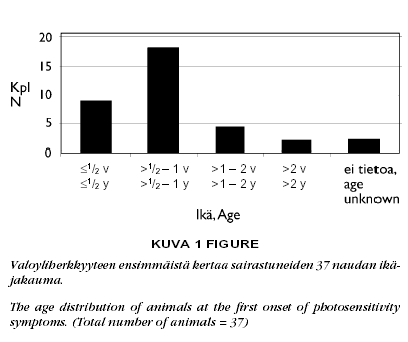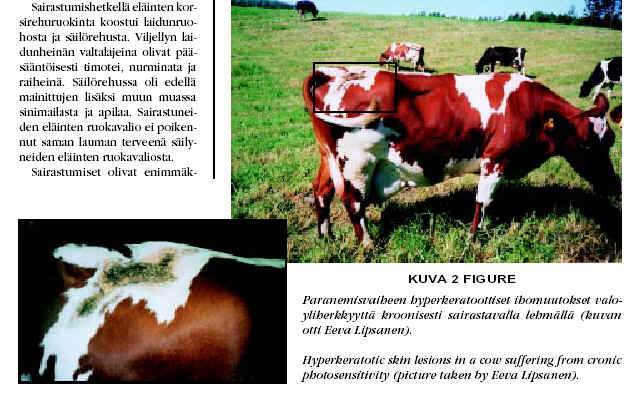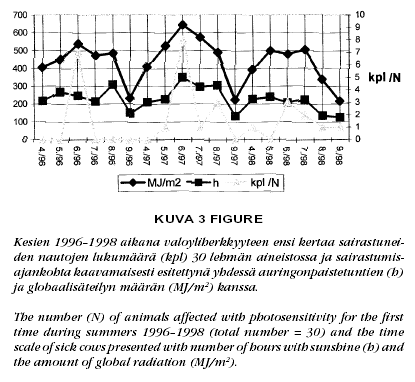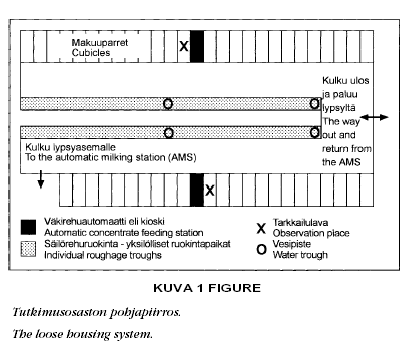
The automatic concentrate feeding station used in loose housing systems has an open back part that allows disturbance of the cow while using the station. The cow may interrupt her visit because of this disturbance. The aim of this pilot study was to find out if cows lose concentrates because of the disturbance, if they get additional concentrates by displacing other cows at the feeding station and if disturbance at the feeding station and milk production of the cow are related.
In this study, 42 dairy cows were observed at two feeding stations during 54 hours. During the observation period, visits to the feeding station were often interrupted when concentrates were dispensed in the feeding station. In these cases, concentrates were more often left over than when the cow was allowed to feed undisturbed. The cow causing the disturbance got additional concentrates by entering the station after 63% of interrupted visits. No relationshi

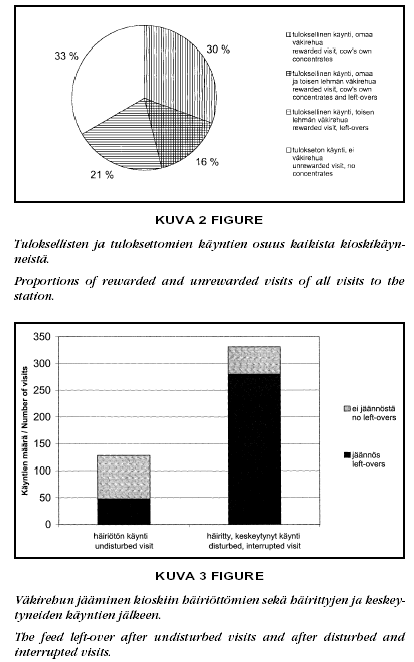
Photosensitivity reaction develops when there is excessive sensitivity to ultraviolet light, or sometimes even to visible light, due to the presence of photodynamic pigments in the skin. Photosensitizing compounds allow the interaction between ultraviolet light and particular biological molecules in the upper skin, which may result in tissue damage. The lesions are often restricted to non-pigmented and sparsely haired skin.
The purpose of this project was to evaluate the occurrence of photosensitivity in Finnish cattle, as well as to collect information on typical symptoms, therapy commonly used and possible causes of the disease. In addition, we wanted to correlate the severity of the acute symptoms with the amount of sunlight and ultraviolet radiation present in different years (1996–1998). The data was collected via interviews of the owners and veterinarians that had been in contact with affected cows. All the animals (37 cows) with typical skin lesions and adequate patient history were included in the study.
Affected animals, usually less than one year of age, showed typical signs of photosensitivity already during their first summer on pasture. Signs typically appeared one week to one month after the animals were moved on pasture. Usually there was only one affected animal in the herd, and it often showed signs, although milder, also during the following summers. More than half of the cases were found during May and June i.e. at the beginning of the summer period, which correlated well with the intensity and amount of ultraviolet radiation present.
The affected animals were treated in various ways. Nearly all the cows (81% of the cases) were removed from direct sun light. In many cases (43%) antiseptic creams were also applied to the skin lesions.
